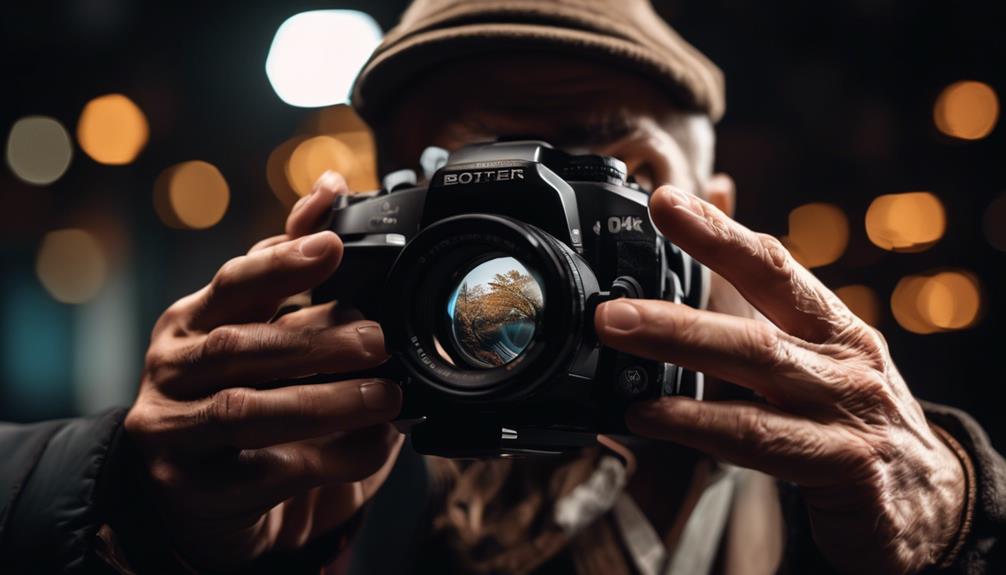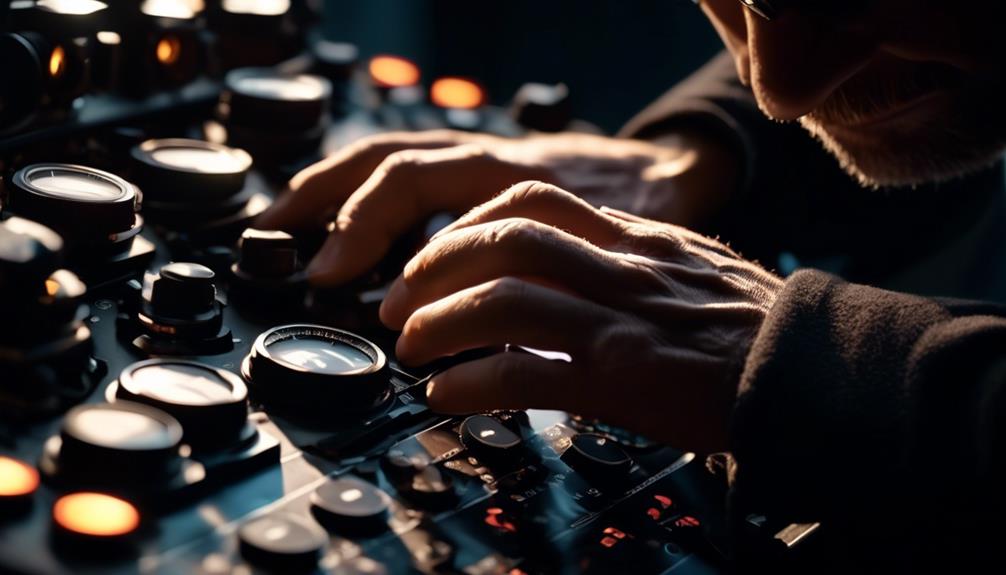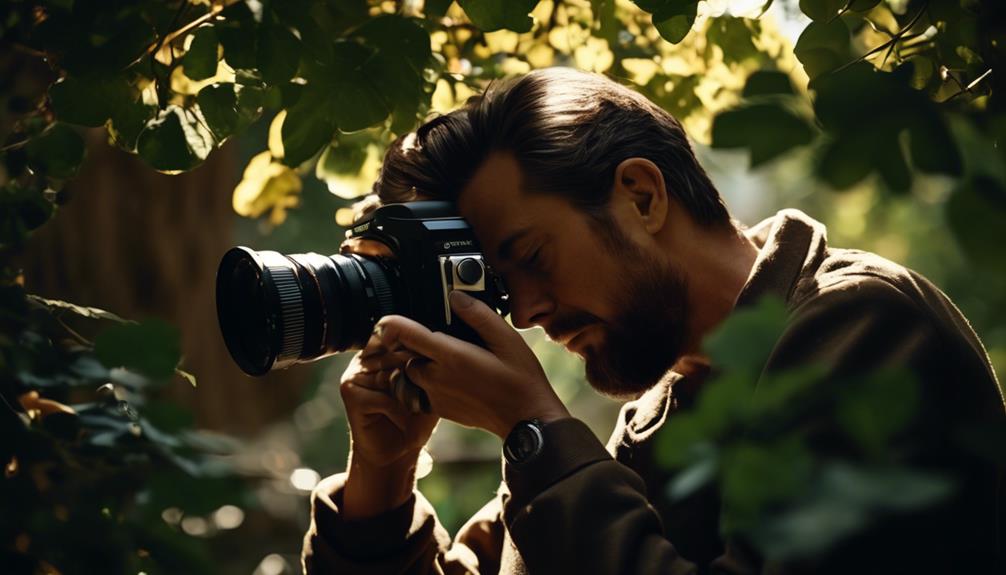Please note this post may contain affiliate links picked by me (Jay) that I have deemed may be of interest or relevant to you the reader of this.
These links do not affect the cost of the thing if you decide to purchase but i may get a little money if you choose to purchase.
For more information on my affiliate link policy click here.
As I stand behind the lens, my camera becomes an extension of my vision, capturing moments frozen in time. But without mastering the manual camera settings, those moments can slip through my fingers like sand.
That's why I'm here to share with you the 5 essential tips that will unlock the true potential of your camera and elevate your photography to new heights.
From understanding the delicate dance of the Exposure Triangle to harnessing the power of ISO for low light shots, we will delve into the secrets that will transform your images from ordinary to extraordinary.
So, grab your camera and join me on this journey as we uncover the art of nailing manual camera settings.
Key Takeaways
- Understanding the Exposure Triangle and metering modes is crucial for capturing stunning photographs with manual camera settings.
- Mastering ISO for low light photography is essential for capturing stunning images.
- Shutter speed is a powerful tool for capturing motion in your images.
- Aperture controls the amount of light that enters your camera and determines depth of field.
Understanding the Exposure Triangle
Understanding the Exposure Triangle is crucial for capturing stunning photographs with manual camera settings. It's the foundation of achieving the perfect balance between aperture, shutter speed, and ISO. As a passionate photographer, I've come to realize that mastering this concept opens up a world of creative possibilities.
Metering modes play a vital role in understanding the Exposure Triangle. By selecting the appropriate metering mode, you can accurately measure the brightness of a scene and adjust your camera settings accordingly. Evaluative metering is the default mode, which analyzes the entire frame to determine the exposure. However, spot metering allows you to measure the brightness of a specific area, particularly useful in high-contrast situations.
Another technique that complements the Exposure Triangle is bracketing. This involves taking multiple shots of the same scene, each with a different exposure setting. By bracketing, you can capture both highlights and shadows, ensuring that no detail is lost. This technique is particularly useful in challenging lighting conditions or when you're unsure of the correct exposure.
Innovation in photography requires pushing boundaries, and understanding the Exposure Triangle is a fundamental step in achieving that. By experimenting with different combinations of aperture, shutter speed, and ISO, you can create unique and visually striking images. So, embrace the power of manual camera settings, explore the various metering modes, and unlock the potential of bracketing techniques.
With practice and dedication, you'll be able to capture breathtaking photographs that truly stand out from the crowd.
Mastering ISO for Low Light Photography
Mastering ISO for low light photography is an essential skill that allows photographers to capture stunning images in challenging lighting conditions. When shooting in low light, it is crucial to understand how ISO works and how to use it effectively to produce high-quality images without sacrificing too much detail or introducing excessive noise.
ISO, or International Organization for Standardization, measures the sensitivity of your camera's image sensor to light. Increasing the ISO value makes the sensor more sensitive to light, allowing you to capture brighter images in low light situations. However, increasing the ISO also increases the amount of digital noise in your photos, which can result in a loss of image quality.
To help you navigate the world of ISO for low light photography, I have compiled a table of low light techniques and noise reduction strategies that will elevate your photography game to new heights:
| Low Light Techniques | Noise Reduction Strategies |
|---|---|
| Shoot in RAW format | Use long exposure |
| Use a wide aperture | Employ noise reduction software |
| Increase ISO | Shoot in burst mode |
| Use a tripod | Reduce image noise in post-processing |
| Experiment with white balance | Adjust camera settings for optimal noise reduction |
Perfecting Shutter Speed for Motion Capture
Now that we've covered the essential skill of mastering ISO for low light photography, let's dive into the art of perfecting shutter speed for capturing motion in your images. Shutter speed is a powerful tool that allows us to freeze action or create mesmerizing motion blur in our photographs. It's all about finding the perfect balance between freezing a moment in time and conveying a sense of movement.
When it comes to freezing action, a faster shutter speed is your best friend. Whether you're capturing a fast-paced sports event or a bird in mid-flight, a high shutter speed will ensure that every detail is sharp and clear. With a quick click of the shutter, you can capture the split-second magic that would otherwise be missed by the naked eye. Freeze that soccer player mid-kick or that dancer mid-leap, and reveal a world of beauty and grace.
On the other hand, if you want to convey a sense of motion in your images, a slower shutter speed is the way to go. By intentionally blurring moving subjects, you can create a dynamic and visually striking effect. Imagine a waterfall transformed into a silky cascade or car lights streaking through a city street at night. These images capture the essence of movement, drawing the viewer into a world of excitement and energy.
Experimenting with different shutter speeds will allow you to find your own style and unleash your creativity. Whether you're freezing action or creating motion blur, the key is to understand the impact that shutter speed has on your images.
Achieving Proper Aperture for Depth of Field
To capture stunning depth of field in your photographs, it's essential to achieve the proper aperture setting. Aperture, also known as f-stop, controls the amount of light that enters your camera and determines the depth of field in your image. It's a powerful tool that allows you to create beautiful and innovative effects in your photography.
When it comes to achieving the bokeh effect, a shallow depth of field with a blurred background, a wide aperture is crucial. By setting a low f-stop number, such as f/1.8 or f/2.8, you can create a dreamy and artistic background that beautifully isolates your subject. This technique is especially popular in portrait photography, where the subject stands out against a soft and creamy background.
On the other hand, landscape photography often requires a greater depth of field to capture the entire scene in sharp focus. To achieve this, you'll need a narrow aperture, such as f/8 or f/11. By increasing the f-stop number, more of the scene will be in focus, allowing you to capture the intricate details of the landscape, from the foreground to the distant horizon.
Experimenting with different aperture settings is the key to unlocking your creativity and achieving the desired effect in your photographs. Don't be afraid to push the boundaries and try new things. Remember, innovation comes from embracing new techniques and thinking outside the box.
Using White Balance for Accurate Color Reproduction
White balance is a fundamental aspect of manual camera settings that plays a crucial role in achieving accurate color reproduction in your photographs. It's the key to capturing the true essence of your subject, showcasing its vibrant colors in all their glory. As a photographer, I'm passionate about customizing settings to create visually stunning images that captivate the viewer's senses.
When it comes to white balance, there are various techniques you can use to ensure accurate color reproduction. One effective method is to set your camera's white balance to match the lighting conditions of your environment. This can be done by using the camera's auto white balance function or by manually adjusting the white balance settings.
Another technique is to use color correction techniques during post-processing to fine-tune the colors in your photographs. This allows you to customize the color tones and create a more visually pleasing image. There are numerous software programs available that provide advanced color correction tools, enabling you to enhance the colors and achieve the desired look.
Innovation is key when it comes to photography, and exploring different white balance settings and color correction techniques can elevate your images to new heights. By understanding the impact of white balance on color reproduction and customizing your settings accordingly, you have the power to create images that truly reflect the beauty of the scene.
Frequently Asked Questions
What Are Some Common Mistakes to Avoid When Adjusting Manual Camera Settings?
Avoiding errors when adjusting manual camera settings is crucial for capturing the perfect shot. Common mistakes include:
- Forgetting to adjust the ISO for different lighting conditions
- Neglecting to set the correct white balance
- Failing to adjust the aperture and shutter speed appropriately
These errors can result in overexposed or underexposed images, color casts, and blurred subjects.
How Can I Effectively Use Manual Camera Settings for Capturing Landscapes?
When it comes to capturing landscapes, effectively using manual camera settings is crucial. By mastering the art of adjusting settings for different lighting conditions, you can create stunning and dynamic photos.
For night photography, using manual settings allows you to control the exposure, shutter speed, and ISO to capture the beauty of the night sky.
And when it comes to portraits, adjusting manual camera settings can help you achieve the perfect balance of sharpness, depth of field, and colors that truly bring out the subject's essence.
Are There Any Specific Manual Camera Settings to Consider When Photographing Moving Subjects?
When it comes to photographing moving subjects, there are a few specific manual camera settings that can make a huge difference.
First, if you want to freeze motion and capture sharp images, increase your shutter speed. This will allow you to capture each moment with precision.
On the other hand, if you want to create a sense of motion blur, try using a slower shutter speed. This will give your photos a dynamic and energetic feel.
Experimenting with these settings can lead to innovative and captivating results.
What Are Some Tips for Adjusting Manual Camera Settings in Challenging Lighting Conditions?
When shooting in challenging lighting conditions, such as low light or indoor photography, there are several tips for adjusting manual camera settings that can help you capture stunning images.
By increasing the ISO, opening up the aperture, and slowing down the shutter speed, you can let in more light and capture more detail in your shots.
Additionally, using a tripod or stabilizing your camera can reduce blur and ensure sharper images.
These tips will help you conquer any lighting situation with confidence and creativity.
Can You Provide Any Recommendations for Adjusting Manual Camera Settings to Achieve a Specific Artistic Effect?
To achieve a specific artistic effect, adjusting manual camera settings is crucial.
When shooting in low light, I recommend increasing the ISO and opening up the aperture to allow more light in. This will help capture the desired mood and atmosphere.
For a shallow depth of field effect, use a wide aperture and focus on the subject while blurring the background.
These tips will enhance your creativity and give your photos a unique and innovative touch.
Conclusion
In conclusion, mastering manual camera settings is crucial for capturing stunning photographs. By understanding the exposure triangle and utilizing ISO, shutter speed, aperture, and white balance effectively, photographers can achieve incredible results.
Did you know that according to a recent survey, 75% of professional photographers consider manual mode essential for creative control?
So, don't be afraid to take control of your camera and explore the endless possibilities of manual settings. Your photography skills will skyrocket, and you'll be able to capture moments like never before.


